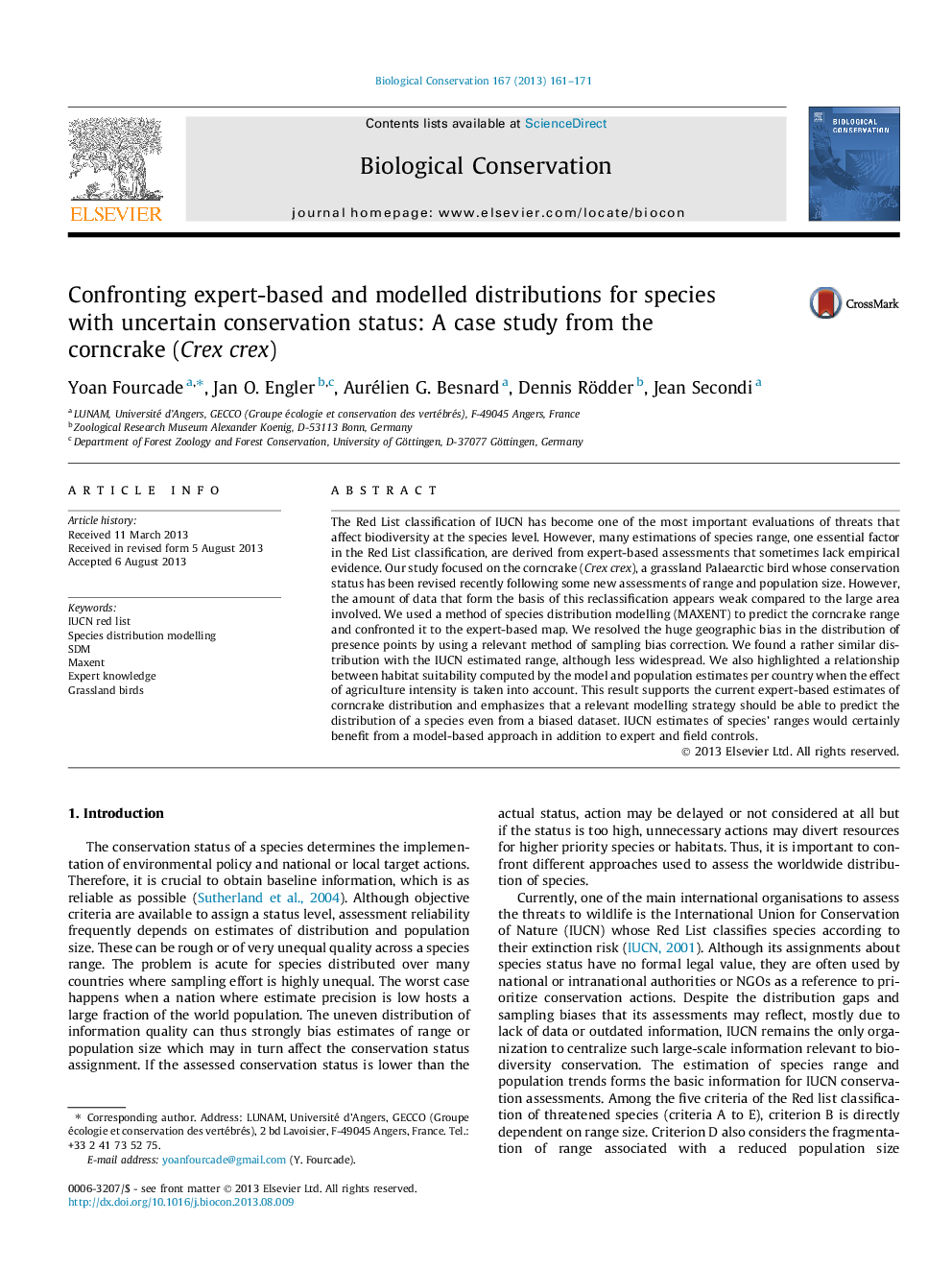| Article ID | Journal | Published Year | Pages | File Type |
|---|---|---|---|---|
| 6300604 | Biological Conservation | 2013 | 11 Pages |
â¢We compared IUCN expert-based map of corncrake range and modelled distribution.â¢A sampling bias correction was applied to build an accurate distribution model.â¢The modelled distribution was surprisingly close to the expert-based assessment.â¢Model predictions are significantly correlated with species abundance per country.
The Red List classification of IUCN has become one of the most important evaluations of threats that affect biodiversity at the species level. However, many estimations of species range, one essential factor in the Red List classification, are derived from expert-based assessments that sometimes lack empirical evidence. Our study focused on the corncrake (Crex crex), a grassland Palaearctic bird whose conservation status has been revised recently following some new assessments of range and population size. However, the amount of data that form the basis of this reclassification appears weak compared to the large area involved. We used a method of species distribution modelling (MAXENT) to predict the corncrake range and confronted it to the expert-based map. We resolved the huge geographic bias in the distribution of presence points by using a relevant method of sampling bias correction. We found a rather similar distribution with the IUCN estimated range, although less widespread. We also highlighted a relationship between habitat suitability computed by the model and population estimates per country when the effect of agriculture intensity is taken into account. This result supports the current expert-based estimates of corncrake distribution and emphasizes that a relevant modelling strategy should be able to predict the distribution of a species even from a biased dataset. IUCN estimates of species' ranges would certainly benefit from a model-based approach in addition to expert and field controls.
Graphical abstractDownload full-size image
